A.O.R.'s New Orbit-Eye Springs
What's the Big Deal? Do You Need 'Em?
 A.O.R.-owner Kevin Grove?s Orbit-Eye-equipped '84 Toy is his daily driver as well as his product test mule and desert-race chase truck.
A.O.R.-owner Kevin Grove?s Orbit-Eye-equipped '84 Toy is his daily driver as well as his product test mule and desert-race chase truck.If you're into serious Toy ‘wheeling, you’ve probably already heard about the new Orbit-EyeTM springs from Advanced Off-Road Research (A.O.R.). You may have even seen them in action on the most radical trails. They’re catching on fast among hardcore suspension-flex hounds who want the most axle articulation possible.
But what exactly is an Orbit-Eye anyway? How does it work? Why does it increase axle articulation? What else does it do? Are Orbit-Eyes for trail rigs only, or are they okay on daily drivers, too? In short, are Orbit-Eyes a big deal, and do you really need ‘em? To get answers to these questions and more, we tore into an Orbit-Eye, watched it work on Colorado’s infamous 21 Road trail, and talked with A.O.R.-owner Kevin Grove.
According to Kevin, he first thought of designing Orbit-EyeTM Springs while he was ramp-testing a rear shackle design on his ‘84 trail Toy. He noticed that the spring eye was binding up in the frame-mounted hanger. The bind-up was so great that it actually limited axle articulation (suspension flex or wheel travel).
Kevin explains that during axle articulation--when one tire droops and the opposite tire is stuffed up--the rigid hanger holds the spring eye parallel to the frame while the axle articulates. The spring pack is U-bolted to the axle, so when the axle angles, the whole spring pack is forced to twist laterally. This bind-up puts extreme pressure and friction on the spring bushings which, in turn, puts the brakes on suspension flex. I.E. axle articulation.
Yet there are even more important negative effects of laterally twisted springs. First, lateral twist increases the spring rate—that is, it makes the springs stiffer. So when you’re trying to crawl over obstacles, the twisted spring can’t flex as well. You lose suspension travel (axle articulation) and the springs don’t react as well to obstacles. Second, this torsional bind-up or twist fatigues the springs and may lead to premature failure. Kevin’s brainstorm was to eliminate the spring-twist bind-up by putting a big ball-and-socket assembly in the frame-mounted spring eye in place of the normal bushing. Of course, the basic ball-and-socket design isn’t new. It’s been used in a variety of applications for fifty years or more--but never in leaf springs.
However, existing ball-and-socket designs didn’t allow as much pivoting movement as Kevin wanted. He also wanted a more durable socket material than the typical polyurethane. So Kevin designed A.O.R.‘s Orbit-EyeTM with a full 38 degrees of pivot and specified a super-durable molybdenum-based nylon socket for the steel ball to ride in. And he designed rustproof 6061 aluminum spanner nuts to hold the assembly inside the .120-wall steel housing.
Surprise, Surprise...
Kevin swapped 5-inch-lift Orbit-EyeTM rear springs in place of the otherwise identical rears and ramped his ’84 Toy again.
Result: a whopping four-inch gain in axle articulation!
The Orbit-Eyes eliminated the harmful lateral twist--and the bind-up--almost entirely. But there were two other surprise benefits, too. First, if you’ve done much twisty ‘wheeling you probably already know how quickly a spring eye can chew brand new bushings down to dust. Well, now trail-munched bushings are history, at least in the Orbit-Eye end of the springs. Second, as we mentioned above, the lateral twisting caused by traditional spring mounts may fatigue the metal in the springs. So if you’re into twisty ’wheeling, it’s no wonder that your old springs are getting soft and saggy and maybe even breaking. It’s a little early to tell with absolute certainty, but theoretically at least, Orbit-Eye-equipped springs should last longer under twisty ‘wheeling conditions.
Orbit-Eyes Sound Great on the Trail, But What About the Highway?
A.O.R. Sales Manager Randy Potter says he has to answer that question a lot, and his short answer is: A.O.R.‘s rear Orbit-Eye Springs do not harm highway handling at all. Many Toy builders use their rigs both on the trail and as daily drivers. Kevin and Randy are no exceptions. In fact, Kevin’s ’84 Toy runs Orbit-Eyes in both ends of the 5-inch-lift rear springs. Kevin thinks nothing of hopping in the Toy and flogging it on the highway from Colorado to Moab, the Rubicon or to desert races in Nevada. Neither Kevin nor any of his customers now running Orbit-Eye Springs have reported any negative handling effects, on the highway or off.
But Randy adds a caution. A.O.R. springs are all custom designed and specially fabricated to work with Orbit-Eyes. And A.O.R. makes the special, wider-than-stock hangers needed to accommodate Orbit-Eyes. You can’t just plug Orbit-Eyes into many existing springs and hangers and expect them to work safely and well. However, A.O.R. does sell Orbit-Eyes alone for those who want to utilize them in their own custom suspension applications.
Okay, But Do I Really Need Orbit-Eyes?
Hey, the fact is that A.O.R.‘s Orbit-EyeTM Springs aren’t for everybody. Kevin designed them to squeeze the last ounce of flex out of super-twisty suspensions. If you’re not into rock crawling and other radical-flex types of ’wheeling, then maybe traditional springs are just fine for you.
Orbit-Eye Springs cost a little more than traditional leaf springs--$100-$200 more, depending on how many Orbit-Eyes you get. But the hardcore ’wheelers who buy them swear they’re well worth the extra dough. Check out A.O.R.’s website and online catalog at www.aor4x4.com for more details and prices for Orbit-Eye Springs and AOR's line of top-quality, hardcore Toyota off-road suspension products.
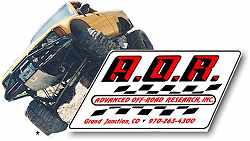 Advanced Off-Road Research
Advanced Off-Road Research http://www.aor4x4.com 725-B West Grand Ave Grand Junction, CO 81501 Phone: 970-263-4300 Fax: 970-263-4200 E-mail: aor@gjct.net |
Follow @Off-Road

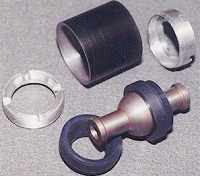
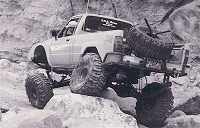
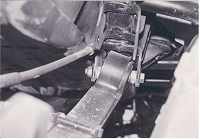
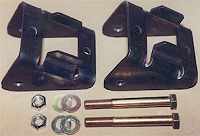
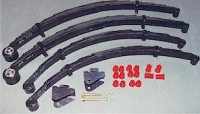

 Your Privacy Choices
Your Privacy Choices